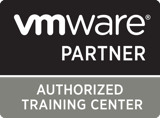Course outline
Duration : 5 Days |
© AFI Expertise inc. | |
This five-day training course provides you with the knowledge, skills, and abilities to achieve competence in troubleshooting the VMware vSphere® 8 environment. This course increases your skill level and competence in using the command-line interface, VMware vSphere® Client™, log files, and other tools to analyze and solve problems. | |
Audience | System architects and system administrators |
Prerequisites | This course requires completion of one the following courses: VCP-DCV certification VMware vSphere: Install, Configure, Manage |
Objectives | By the end of the course, you should be able to meet the following objectives:
|
Contents | Course Introduction
Introduction to Troubleshooting
Troubleshooting Tools
Troubleshooting Virtual Networking
Troubleshooting Storage
Troubleshooting vSphere Clusters
Troubleshooting Virtual Machines
Troubleshooting vCenter Server and ESXi
|
